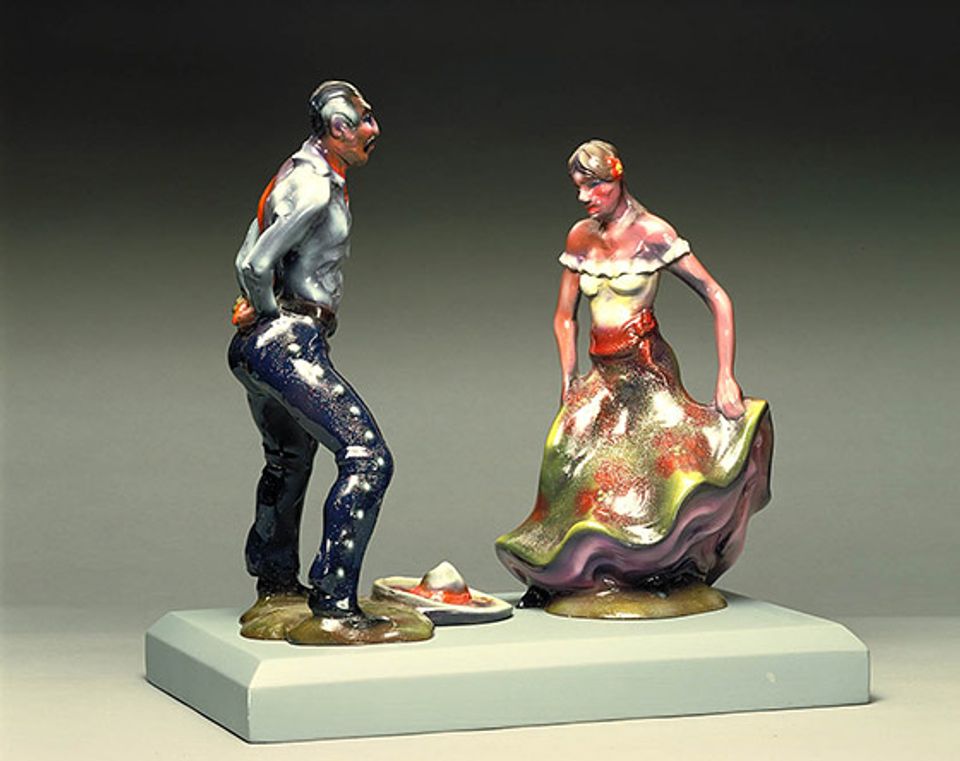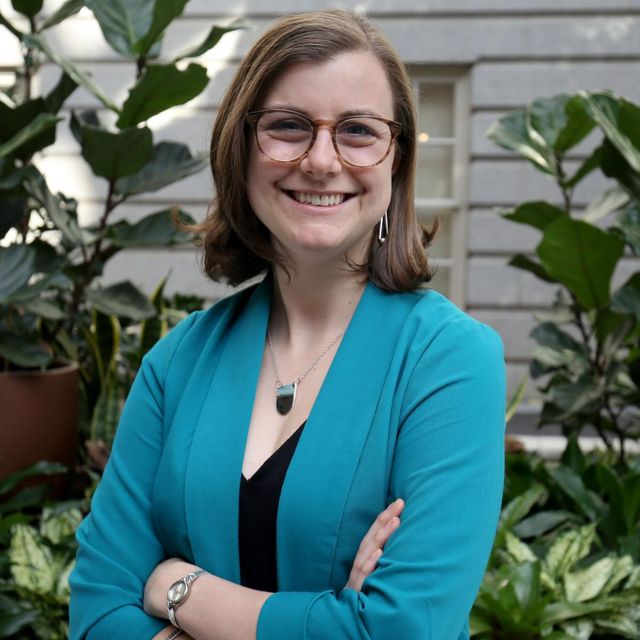

In redefining the myth we're really redefining ourselves...
Luis Jiménez,Texas Monthly, September 1998
The Luce Center is filled with all kinds of treasures and Model for "Fiesta" by Mexican-American artist Luis Jiménez is no exception. The General Services Administration (GSA) commissioned Jiménez to make a grand sculpture for the Otay Mesa border station near San Diego, California. Wanting to create a work that presented "real people in a real situation," Jiménez constructed an 8-foot statue of a man and woman dancing a traditional Mexican hat dance called Jarabe.
When it was finished some thought the sculpture was disrespectful to Mexican culture. Some believed that the woman's dress looked Spanish rather than Mexican, and that it fit too tightly. The man, critics said, was too dark and too fat.
However, the vast majority admired the larger than life sculpture. One journalist for the The Los Angeles Times said of the piece, "The work is a credit to the GSA art program," and the couple is "timeless." Others, like the Colorado Springs Independent claimed it a "masterpiece." The Texas Monthly also said that Fiesta was "showing us the true faces of the West."
"True faces" was exactly what Jiménez was trying to accomplish in his sculpture. He saw his artwork as a bridge connecting people from one side of the border to the other. He was never interested in labels, like Hispanic or Chicano, nor was he interested in depicting stereotypes. Instead Jiménez wanted to recreate real working-class people.
Currently the 8-foot statue lives on the University of New Mexico campus, but the model he used for the final sculpture can be found in the Luce Foundation Center here at SAAM. Regardless of its size, both statues have sparked dialogue about heritage and identity. In summarizing his artwork, Jiménez stated, "In redefining the myth we're really redefining ourselves...And I think it's important to keep redefining ourselves. That's something that artists have always done." Art has a special way of making people see the world differently and Fiesta is no exception. Jiménez countered stereotypes with his colorful and captivating sculpture that exemplifies the universality of culture, dance, and passion.


















